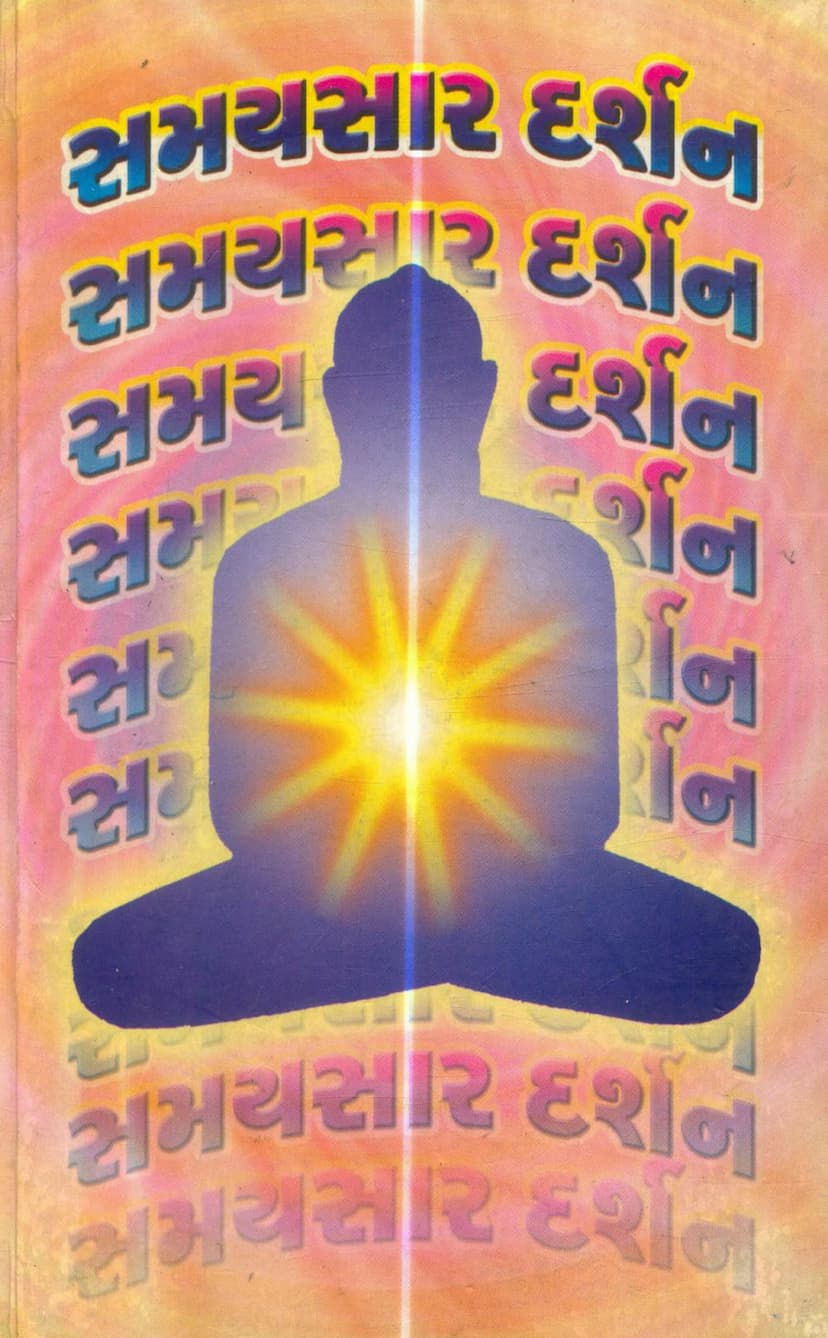Samaysara Darshan
Added to library: September 2, 2025

Summary
This is a comprehensive summary of the Jain text "Samaysara Darshan" by Ramniklal Savla, based on the provided text:
Overall Theme and Core Message:
"Samaysara Darshan" is a concise exposition of Jain philosophy, emphasizing the core principle of Vitaragta (freedom from attachment and aversion) as the true essence of the soul and the ultimate goal of spiritual practice. The text highlights that true religion (Dharma) lies in understanding the soul's inherent nature and aligning one's consciousness with it. It strongly advocates for Bhed Vigyan (discrimination between the soul and non-soul entities) as the path to achieving this realization, ultimately leading to liberation (Moksha).
Key Concepts and Principles:
- Dharma as Essential Nature: The book defines Dharma not as a sect or dogma, but as the inherent nature of an object (Vastu Swabhav). For the soul (Atma), Dharma is its inherent qualities like infinite knowledge, perception, power, and bliss, with Vitaragta being its ultimate true nature.
- Bhed Vigyan (Discrimination): The central theme is the practice of Bhed Vigyan, the continuous and unbroken contemplation of the soul's distinctness from all other substances (Paradravya) and their states (Parbhav). This practice is presented as the means to achieve Kevalgyan (omniscience) and the subsequent state of liberation.
- Soul's Independence: Each soul is presented as independent in its actions and outcomes. No external entity can perform actions for or influence another. The universe operates on principles of self-governance, where each substance manages its own results.
- Three Fundamental Principles: The text outlines three fundamental principles of this "Vitarag Vigyan":
- Dravya's Independence: Each substance is independent in its essence, qualities, and states.
- Kramabaddha Paryaya (Sequential States): Every substance's transformation happens in a predetermined sequence, as known by the omniscient beings.
- Upadana-Nimittha's Independence: Each substance transforms according to its inherent potential (Upadana), and while external factors (Nimitta) may be present, they do not directly cause the transformation.
- Ahimsa as Vitaragbhav: Ahimsa (non-violence) is defined not merely as outward actions but as the internal state of Vitaragbhav (absence of attachment and aversion). Inner violence (Bhav Hinsa) is the generation of attachment and aversion, and its absence is Ahimsa, the cause of happiness.
- True Happiness Within: The text emphasizes that true happiness resides solely within the soul. Seeking it in external objects or even in supreme beings is futile.
- Path to Happiness and Moksha: To attain this inner happiness and liberation, one must:
- Recognize oneself as distinct from the external.
- Develop faith in the soul's true nature.
- Understand the true nature of the Vitaragi Dev, Guru, and Shastra.
- Grasp the essence of the Jivadi (soul and other six substances) seven realties.
- Practice Bhed Vigyan to discern the self from the non-self.
- Concentrate the mind on the self for Samadarsana.
- The Role of Samyagdarshan: The journey to liberation begins with Samyakdarshan (right faith/perception), which arises from the accurate understanding and faith in the self and the non-self. This right faith leads to right knowledge and right conduct (Ratnatraya), which together constitute the path to Moksha.
- Shuddhopayoga vs. Shubhopayoga: Shuddhopayoga (pure spiritual application) is the goal, while Shubhopayoga (auspicious activities) and Ashubhopayoga (inauspicious activities) are merely causes of karmic bondage, though Shubhopayoga is a stepping stone.
- Vows of the Learned: The text strongly advocates for the study of Jain scriptures, association with learned and virtuous individuals (Satsang), and introspection (Svadhyaya) as crucial for discerning the true nature of reality.
- Tirthankaras and the Eternal Dharma: The text clarifies that Tirthankaras do not establish religion but reveal and re-establish the eternally existing Dharma of Vitaragta. Jain Dharma is described as Sanatan (eternal) because the soul's existence is eternal.
- Importance of Bhed Vigyan in Practice: The book outlines a step-by-step process for Atmanubhuti (soul realization), starting with Patrata (worthiness), followed by Abhyas (practice), Tattv ka Yatharth Nirnay (accurate determination of reality), Bhed Vigyan (discrimination), and culminating in Atmanubhuti (soul realization).
Structure and Content:
The book is structured as a detailed explanation of Jain principles, likely drawing heavily from the foundational Samaysara scripture by Acharya Kundakunda. The text systematically explains:
- The Nature of Dharma: Defining it as the inherent nature of the soul.
- The Concept of Vitaragta: As the soul's true state.
- The Path to Moksha: Emphasizing Bhed Vigyan and the practice of Samadarsana.
- The Three Pillars: Samyakdarshan, Samyakgyan, and Samyakcharitra as the path to Moksha.
- The Principles of Causality: Discussing Dravya's independence, Kramabaddha Paryaya, and Upadana-Nimitta's independence.
- The Importance of Inner Experience: Stressing that Dharma is not mere knowledge but an experiential realization.
- The Role of Tirthankaras: Revealing their function as revealers, not creators, of the eternal path.
- The Progression of Spiritual Practice: From initial discrimination to the ultimate experience of the soul.
Key Takeaways for the Reader:
"Samaysara Darshan" aims to guide the aspiring soul (Mumukshu) towards self-realization. It provides a framework for understanding the fundamental tenets of Jainism and offers practical guidance for spiritual advancement. The core message is that by diligently practicing Bhed Vigyan and focusing on the soul's intrinsic nature, one can shed karmic coverings and attain eternal liberation and bliss. The book encourages continuous effort and unwavering faith in the self as the ultimate refuge.